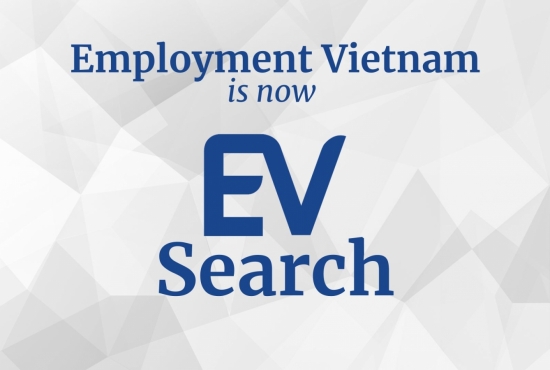Hybrid employment is just, right?
Many of its supporters claim that hybrid is the best combination of in-person and remote working, the tangible and the digital, the old guard and the young breed.
However, there is mounting evidence that shows hybrid can really be quite unfair if used improperly. It can lead to a two-speed corporate environment where remote workers are penalized for their own decision, far from providing everyone their ideal version of work.
The problem of proximity bias is increasingly being discussed around the (virtual) watercooler in the HR industry. Leaders are concerned that people who hurry back to the workplace may receive advantages or preferential treatment over their distant counterparts. According to some studies, this might even lead to silent discrimination, which would penalize traditional minority groups for not being able to "go back to work."
Slack's study on this subject is very alarming. The San Francisco-based software company claims that more black, hispanic, and Asian-American employees are preferring to work remotely than white employees, based on polls conducted throughout the country. Working parents appreciate geographic flexibility more than non-parents, and women are more likely than males to work remotely.
One of the key designers of this study is Brian Elliott. He serves as executive head of the company's Future Forum, which conducts quarterly polls of more than 10,000 knowledge workers, in addition to serving as senior vice-president of Slack. He also thinks that hybrid cannot be completely fair until it actively tries to account for everyone, according to his studies.
According to Brian, "Hybrid may be the "messy middle" of work styles without proactive leadership and effort." "Proximity bias challenges arise when CEOs, men, white knowledge workers, and non-parents choose in-person office work at higher rates than other employee categories.
Old models cannot be used to this new method of working. No matter how frequently or how seldom employees visit the workplace, leaders must provide equitable access to opportunity.
In his daily job, Brian places a high priority on this. At Slack, hybrid is more than just a blank sheet of paper covering the whole business. Instead, it is made to be flexible and dynamic, bending and flexing to fit each unique unit.
"With the aid of various guardrails that support the realization of these ideals, we're encouraging teams to create rhythms that work for them. Top-down, "one size fits all," is completely inappropriate for anyone.
A good reconsideration, not a great resignation
Not that Brian is against flexible employment, mind you. In fact, according to Slack's own data, 78% of employees demand flexibility, and the great majority of them want hybrid work arrangements that allow them to interact with their colleagues in person while still meeting their daily needs.
Brian cites these statistics to support his assertion that the much-heralded "great resignation" is actually a "great rethink" and that businesses who don't embrace flexibility would fall short of the new, raised expectations of their employees.
"The battle for brilliant individuals is constant, and leaders who want to draw in and keep top talent must be deliberate about changing their work patterns.
People are relocating to better opportunities and locations that are a better match for their lives and ideals, not merely quitting their jobs. They are rethinking the organization's mission, the leadership's openness, their sense of belonging to the team and organization, and adaptability above all else.
It's not just about where it is
Flexibility must take into account both when and where individuals work if it is to be truly inclusive and neutral.
According to our poll, 95% of respondents said they wanted schedule flexibility, and those who had it reported larger benefits than those who only had location flexibility in terms of their sense of belonging and productivity.
As a result, Slack leaders have held off on imposing detailed, top-down demands on work schedules. Instead, the business has embraced the idea of "core hours," a period of time (often four hours) in the center of the day when coworkers are accessible for in-person meetings and cooperation.
Colleagues shouldn't be anticipated to be instantly available during this time, and calls cannot be arranged. Each individual now has time and space to attend to their own personal responsibilities or intensely focused tasks.
It's crucial for leaders to watch out for aggravating the "always on" problem, which has been on the rise for decades, when they abolish the 9-to-5.
We've changed the way we operate significantly to accommodate asynchronous work, which means releasing people from the conventional 9 to 5 schedule of back-to-back meetings and allowing individuals and teams the freedom to work and interact when it suits them best.
"[The core hours policy] fosters the flow of information and openness while also assisting employees in reestablishing boundaries between work and life."
Everyone ought to feel heard and seen
In addition to the scheduling problem, there are also the unique challenges brought on by digital technologies, which may both facilitate cooperation and erect impenetrable walls.
Some people could feel excluded if a given piece of software is utilized unfairly, that is, if one set of employees uses a technology that is restricted, cumbersome, or too demanding for another. Slack's own communication tool, which can be used to establish streams for team discussion, one-on-one cooperation, and general banter, is the most flexible program available.
Naturally, Slack's own staff members rely extensively on the program developed by their employer. To utilize it, though, Brian and his colleague leaders have developed clear criteria.
While Huddle, Slack's audio function, is kept for important business tasks like team discussions and one-on-one reviews, colleagues are encouraged to publish status update messages in Slack to let their coworkers know they are away from their computer (for example, running an errand or child care).
However, there are controls when using video conferences for meetings. Everyone should dial in, and they should be used sparingly.
Our notion that meetings should be spread and digital, as Brian explains, is what motivates our "one dials in, all call in" guideline. Teams should prioritize voice over video and use video only when necessary to ensure that every caller feels equally heard and seen.
Slack is taking things a step further this year by experimenting with the notion of no-meeting Fridays, when staff members block off their calendars and turn off alerts to maximize their productivity. Some teams even use "Maker Weeks," where "maker" alludes to each person's ability to effect change and advancement. During these weeks, all regular meetings are canceled so that everyone, regardless of location, can focus.
Leaders must lead by example
But if the leaders themselves don't set an example, establishing regulations against proximity bias (or even eliminating them) is pointless. Senior leaders returning to the workplace could pressure others to do so despite their own best interests.
Slack came up with the concept of "speed restrictions" to reduce this danger by making decision-makers consider how and how frequently they utilize the workplace.
The company's executives are urged to limit their attendance to three days a week, or at the very least, make sure their attendance does not differ significantly from that of their team. Further encouraging executive appraisals online rather than in person are higher ranking personnel. Some people are even refusing to reserve a conference space, demonstrating that going digital is the way to go right now.
Executive "speed limitations" are a tactic that Brian proposes leaders use to set an example for others to follow. To make sure they're not merely offering 'fake flexibility,' leaders must set standards and guidelines and then set an example for others to follow.
"Many businesses need to retrain managers to monitor results rather than attendance and teach them how to lead with open, two-way communication. Other executive actions are also crucial, especially the way they conduct executive reviews, which provide mid-level staff members the uncommon chance to speak with an executive.
"Measuring these efforts' results is crucial for leaders. Not only in terms of metrics like diversity in hiring, pay, and promotion, but also in terms of whether your employees feel supported by their manager and a sense of belonging with their teams, as well as if they feel that the company is investing in their growth so they can succeed.
Slack wants to improve work for all parties
The success of this new strategy is attested to by Slack's own employer evaluations. On Glassdoor, the firm has a stellar 4.6 average rating, outpacing even other tech behemoths like Google, Apple, and Microsoft.
However, the goal here is to develop a fantastic internal culture as well. Slack is also developing a template that it can make available to everyone; Brian and his coworkers wrote a book titled How the Future Works that aims to assist readers in transitioning from the "new normal" to the "next normal."
We think that the future of work will be digital-first when more offices reopen, says Brian. There are definitely advantages to getting together in person with your team on a regular basis, particularly when it comes to team-building, so "digital-first" doesn't mean "never in person".
"Digital-first teams have greater freedom to work when and where it suits them most, and to do their best work. Adopting a digital-first shift won't happen overnight, but it's about trying new things, picking up new skills, and making progress. Colleagues may cooperate, communicate, and create from anywhere in the globe by adopting a principles-driven approach and moving your headquarters online.
As a business, we place a strong focus on "progress not perfection" and keep this in mind while creating designs. As we experiment and discover what works and what doesn't, we'll happily keep sharing what we learn with everyone to improve work for all individuals and organizations.
Source: hrdconnect.com








